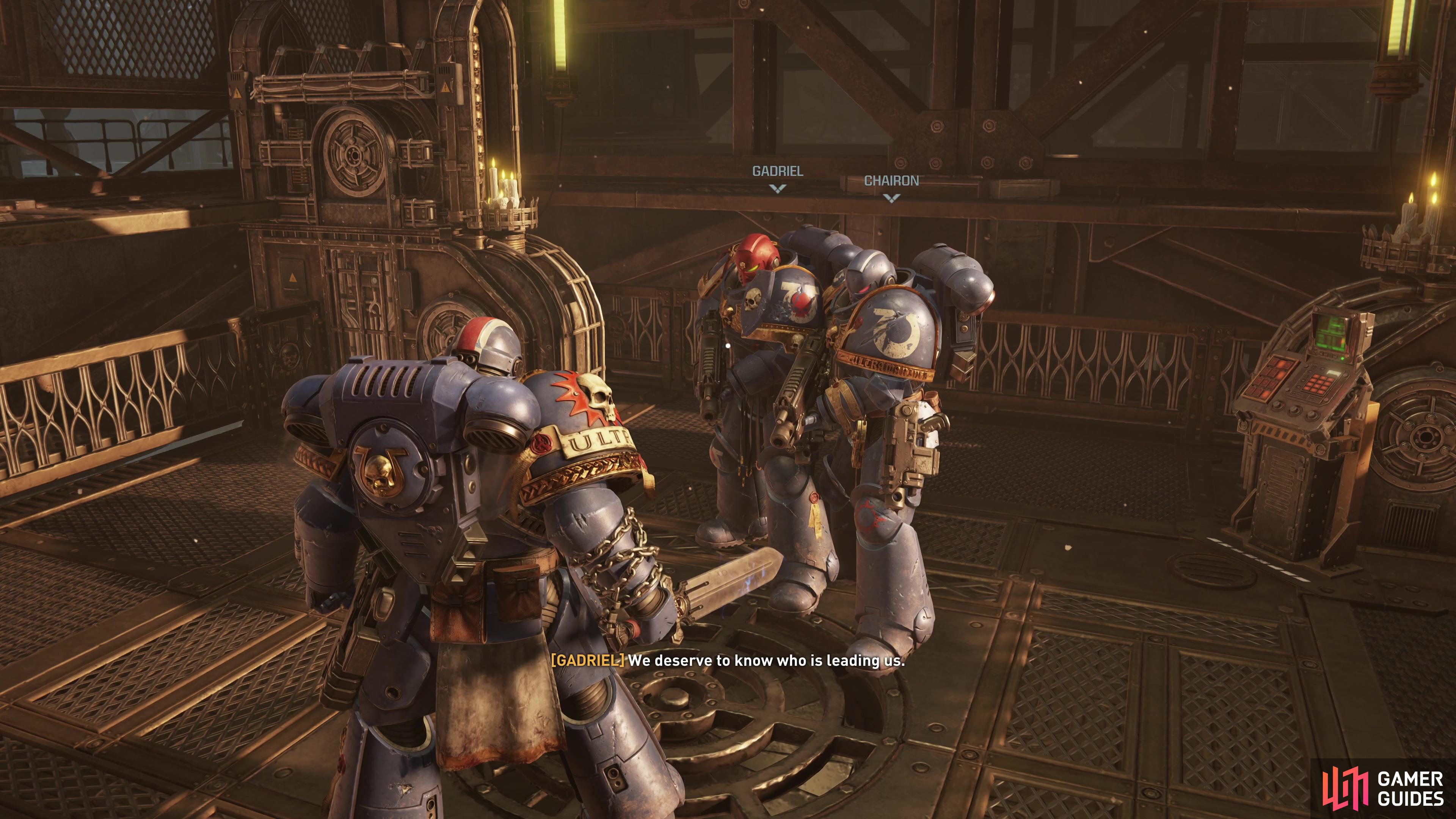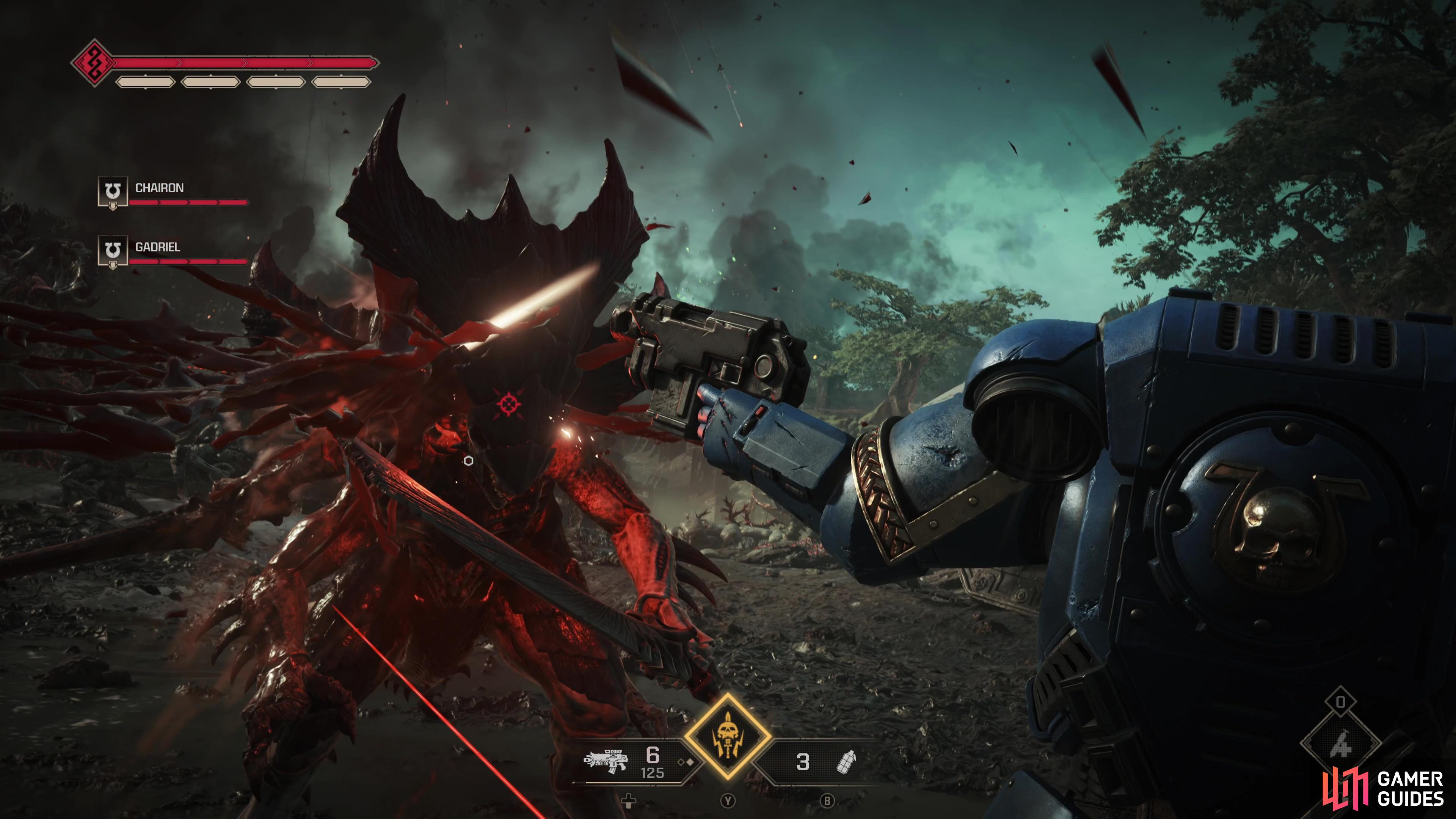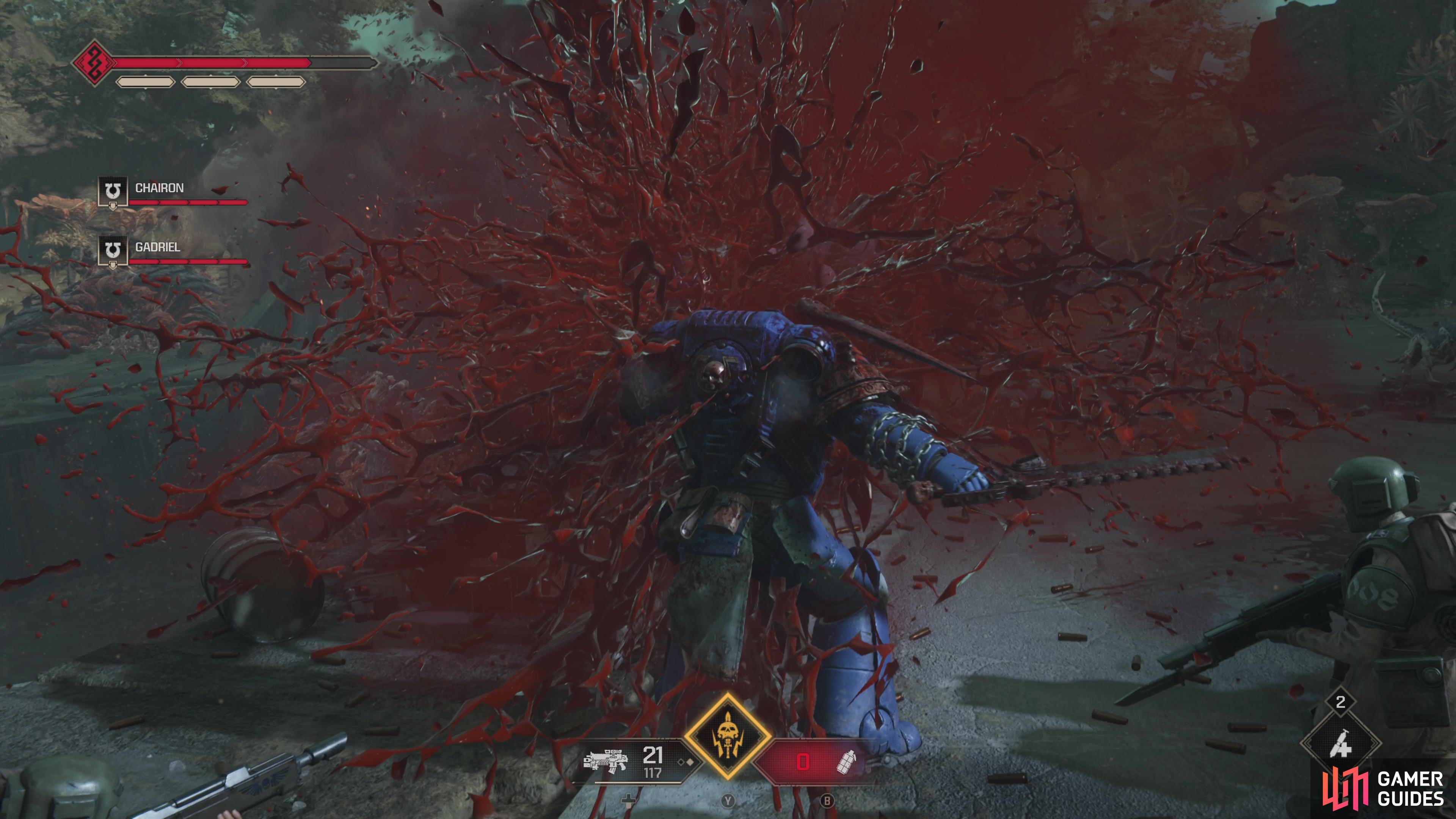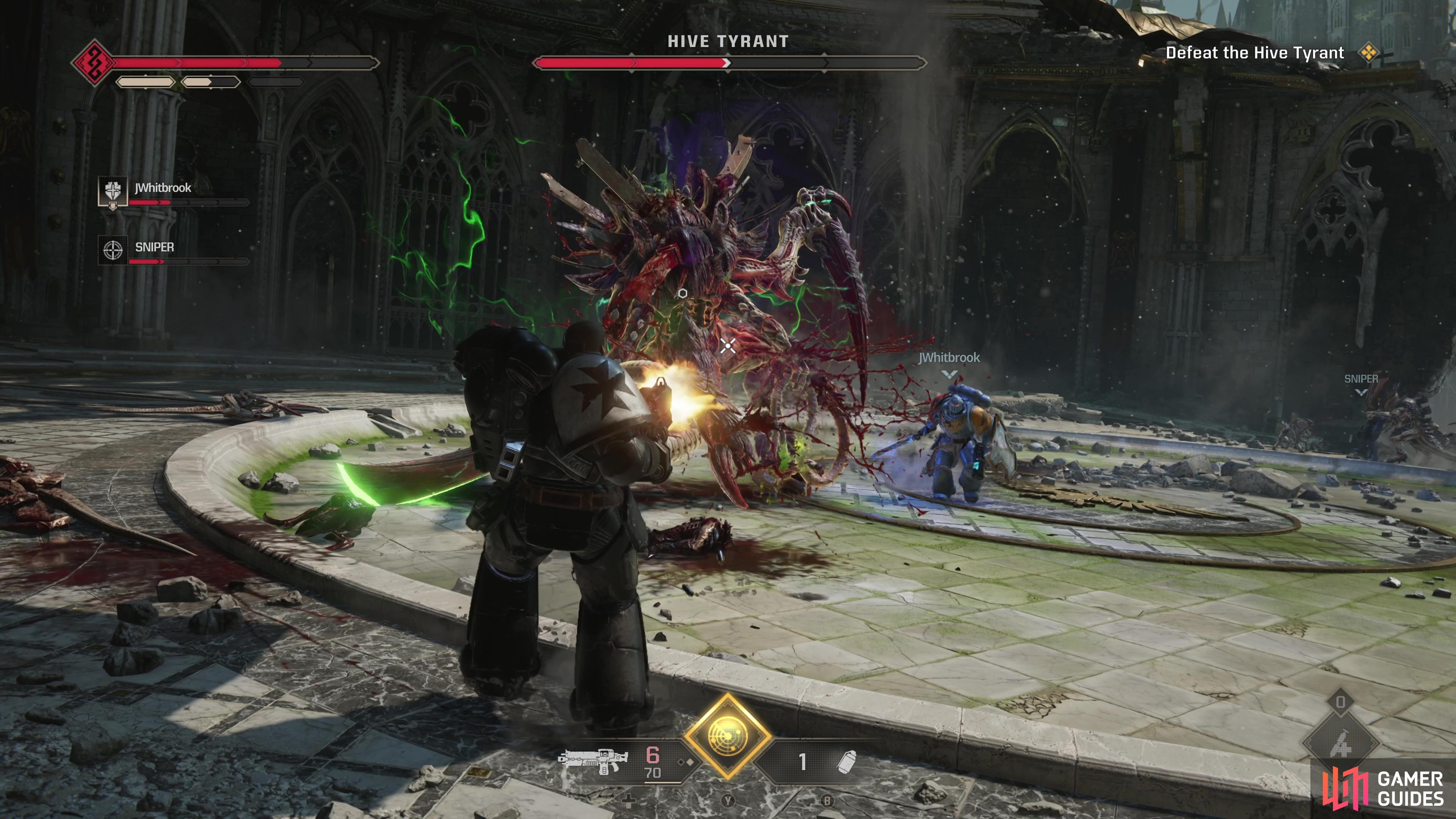
Warhammer 40,000: Space Marine 2 Review
Pros
- Excellent, bloody combat.
- Quality level design and setpieces.
- Gorgeous graphics and stable performance.
- Plenty of Warhammer 40,000 fanservice.
Cons
- Feast or famine gameplay can be frustrating.
- Questionable amount of launch content.
- Rippers.
After spending the better part of a decade lost in the warp storms formed by the fall of THQ, Space Marine 2 emerged from the immaterium at the Game Awards in 2021. Three years later, Captain Titus finally stands ready to resume his righteous crusade against the mutant, the heretic and the xeno, but is his second outing a glorious triumph for the God-Emperor or an act of vile heresy?
Before getting into the content and gameplay of Space Marine 2, it’s worth mentioning the other part of the game’s title. That’s right, the Warhammer 40,000 bit at the start. Warhammer 40,000 is shrouded in a dense fog of lore that can be intimidating for the uninitiated. Why are space marines so big (aside from their heads)? What are the characters talking about when they mention the Rubicon and Primaris? What is a Cadian? What are “machine spirits” and why do Tech-Priests seem so fond of melting rows of candles atop sensitive-looking machinery? Space Marine 2 has no interest in explaining the lore to you - there are plenty of forums and wikis you can turn to if you seek to slog through the quagmire of Warhammer 40,000 lore, but be wary - the lore is a gateway drug to plastic. Take it from an enduring addict: your wallet might be happier if you learn to enjoy the mystery of it all.
A Typical Trio
Fortunately an in-depth understanding if the lore isn’t required to understand or enjoy Space Marine 2. You play as Titus, a stoic space marine with a checkered past that is largely kept secret from both the player and his squadmates, Charion and Gadriel. This secrecy - which frequently strays into the realm of petulance on Titus’s part - ends up being the primary source of antagonism between Titus and his fellows, with Gadriel regarding Titus with combative suspicion and Chairon being decidedly more charitable. It’s a familiar dynamic which fills up a lot of the dead space during missions which is otherwise spent trudging between objectives. A handful of minor characters including tech-priests, a commissar and a perpetually hostile chaplain round out the cast, and while the main questline is mostly a hunt for a MacGuffin, it’s serviceable enough - it’s not a story that’ll stick with you for years to come, but it’ll keep you entertained over the course of the campaign’s runtime.
The protagonist, Titus, leads a squad consisting of Chairon and Gadriel, and their bickering, which generic, accounts for much of the character development in Space Marine 2.
In the Grim Darkness of the Far Future, There is Only Fanservice
The plot in Space Marine 2 might not be Shakespeare, but one might just suspect it never set out to be. Instead the game focuses on visceral combat with a healthy helping of fanservice on the side; boltguns, plasma weapons, chainswords, thunder hammers, jump packs, Lemun Russ tanks and more - they’re all present and faithfully recreated. Aside from some nerdy nitpicks (melta weapons should fire beams, not globes) these weapons look and sound exactly like you’d expect them to, adding to the inherent power fantasy of playing a space marine. Bolters fire with a satisfying thud and sawing through a leaping Tyranid or wrenching the helmet from a heretic Astartes and watching its putrescent soul disperse into the aether never gets old. Space marines move with satisfying heft.
We played the game on PC (AMD Ryzen 9 7900X, RTX 4080 Super) and had no trouble maxing out the graphical settings while running at a constant 4k/60fps. The game’s not just pretty, either - over the course of forty some hours with the game the number of times there were any noticeable frame dips could be counted on one hand. At least from our experience, optimization and bugs weren’t an issue, although some odd design choices (like having to trudge through the Battle Barge repeating old conversations if you wanted to replay a campaign mission) can be annoying.
Space Marine 2 can put a lot of enemies on screen at once, setting some some engaging encounters with Tyranid swarms!
Dodging and Parrying - For the God-Emperor!
Combat itself is a fast-past and visceral affair largely centered around performing well-timed dodges and parries of attacks which will trigger a Gun Strike counterattack. Attacks that must be dodged are marked with orange indicators and those that can be parried warn you with blue indicators - it’s not quite Batman: Arkham Asylum in that you won’t be performing combos, but the general flow of combat should feel familiar to seasoned gamers. Weaken an enemy sufficiently and they’ll start glowing red, indicating you can perform an execution; Gun Strikes and executions both restore contested Health and lost Armour, and this encourages aggressive, high-risk, high-reward gameplay from the player.
Successfully perfect dodge or perfect parry an attack and you’ll score a Gun Strike.
While thrilling when you’re playing well, the frustration of defeat is also magnified by this system. Miss one parry prompt and you may sustain several hits from an elite enemy before you can properly recover, reducing you from full Health and Armour to fighting for your life. Fortunately the timing required for a perfect parry or dodge isn’t all that strict, and learning what’s going to spawn where and adjusting your tactics (and maybe thinning the herd with the odd grenade) can help. Tactical gameplay is rewarded, as is performance, but bringing the wrong gun to a fight and fighting poorly are both harshly punished.
Gun Strikes and executions both restore Contested Health and lost Armour, and this encourages aggressive, high-risk, high-reward gameplay from the player.
Speaking of guns… while dodging and parrying in melee combat are the highlights of the combat experience, you also have a variety of ranged weapons you can use to supplement the inevitable melee scrum. A variety of automatic fire boltguns can be used to thin out enemy hordes, sniper weapons can pick off high priority targets from afar, while melta weapons serve as the game’s shotgun. Your arsenal is further buoyed by various grenades you can pick up and the odd special ability unique to each character and class.
Combat in Space Marine 2 can be feast or famine - when you’re doing well, it’s hard not to enjoy its bloody excesses.
The Campaign
The main campaign is split into seven missions (not including the tutorial) with six additional missions in Operations mode, altogether accounting for about 10-12 hours of playtime. Between Tyranid-infested swamps, overrun Mechanicus facilities, the ruins of an ostentatious imperial city and the fragments of a warp-consumed world, there’s plenty of variety in the scenery. Enemies are another matter - there are only two enemy factions and the standard Tyranid Gaunts and Warriors will be wearing awfully thin by the time the Thousand Sons show up in the latter half of the story, but the game’s regular set piece encounters help keep combat interesting.
The main campaign is split into seven missions with six additional missions in Operations mode, altogether accounting for about 10-12 hours of playtime.
Operations Mode and Eternal War
You’ll need to advance the campaign a bit to unlock the real meat of the game - Operations Mode and Eternal War. The latter is a series of 6v6 PvP matches that we didn’t test as much as there were limited participants on the review servers, while the former are PvE side missions detailing operations carried out by other space marines supporting Titus’s endeavors in the campaign. Instead of the versatile, veteran Titus and his crew, for these game modes you’ll play a generic space marine whose appearance and class can be customized to suit your aesthetic preferences and playstyle. You might be stuck playing a smurf in the campaign, but if you really want your marine to be a Black Templar, Blood Angel, Salamander, or a custom chapter of your own choosing, Operations mode runs are the key.
Your class in these PvE and PvP modes determines what weapon you have access to and what special abilities you can use, fotcing you to specialize, emphasizing the importance of squad play. A Sniper might be good at picking off dangerous enemies from afar, but may struggle if he’s mobbed in melee, while a Heavy equipped with a Multi-Melta might deal tremendous damage at close range, but their limited ammo forces them to rely on others to take care of fodder enemies.
In another change from the campaign, Operations mode has a progression system. Completing Operations will earn EXP for your class and any equipped weapons, as well as currency you can use to unlock cosmetics. Both your class and your weapons have their own perk trees you can invest in to suit your playstyle and make your generic marine stronger, which in turn will allow you to bump up the difficulty to face stronger enemies for greater rewards.
Clearly intended to be the “meat” of the game, Operations allow you to team up in a squad of three to completing side missions, leveling up your class and weapons in the process.
In the Grim Darkness of the (Near) Future
Space Marine 2 is a quality game in terms of performance, gameplay aesthetics, and especially that sweet, sweet grimdark fanservice. Its characters might not be the most interesting and its plot is generic, but even these less-than-stellar aspects of the game aren’t really bad, merely unimpressive, a little bit of beige in a sea of excellence. Once the campaign is done, the game’s PvE and PvP modes give you further incentive to stick around, but the amount of content available at launch is questionable. Running the same six Operations over and over again to level up classes and weapons will certainly have limited appeal to some players, but the developers have promised a slew of new (and free!) content over the upcoming year.
If you absolutely adore Warhammer 40,000 or you have a reliable squad you can play with, Space Marine 2 is easy to recommend. If you’re not a genre die-hard or Warhammer 40,000 addict, or you lack friends, you may want to be mindful of limited postgame content at launch and wait a little longer to pick it up.
Burns bright, but for how long?
Visceral combat, excellent set pieces, and plenty of Warhammer 40,000 fanservice, but is there enough launch content to satisfy less diehard fans?
Gameplay:
Sound:
Graphics:
Story:
Value Rating:






No Comments